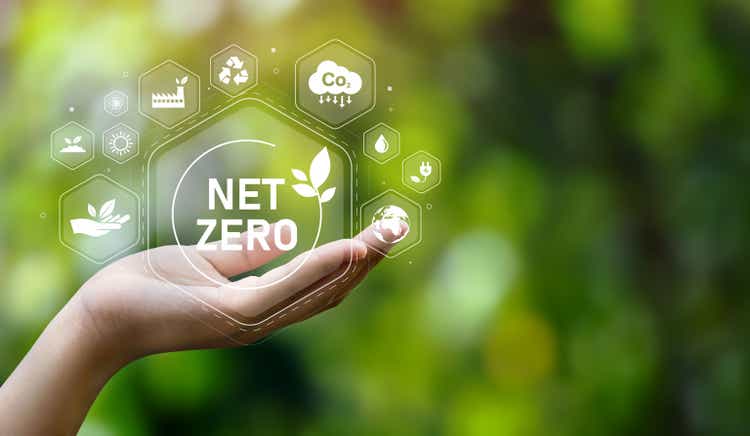Sakorn Sukkasemsakorn/iStock via Getty Images
The growing global commitment to the energy transition – the transformation of the economy to Net-Zero Emissions by 2050 – is intensifying demand for critical minerals like lithium and exposing shortages of mining and processing capacity.
Following incentives to buy electric vehicles established in places like Germany and California, batteries will be needed for about 42 million EVs in 2032, about seven times more than in 2021. Carmakers will need more lithium and cobalt for batteries, more electrical grade steel for motors and transformers, more copper for wiring, and more generators to charge vehicles.
The surge in demand creates opportunities for companies involved in mining, refining, milling, power generation and construction activities. It also exacerbates regulatory and operational risks, such as criminal activity and government intervention intended to boost local economies and mitigate environmental impact.
A supply-demand gap is likely to open up, leaving businesses and governments scrambling to close it to achieve climate goals. For copper – the “metal of electrification” – recent S&P Global estimates show that gap will begin in 2025 and last through most of the following decade. New mines will need to be brought online at an accelerated rate, which is likely to increase the risk of protests over environmental and economic concerns.
Latin America
Latin America has about 60% of the world’s supply of lithium, although it has only four projects currently in production.
Governments including Bolivia and Mexico are increasing state control over lithium reserves as the value of these reserves has risen. Mexico and Chile are creating state-owned companies to mine critical minerals, which brings more regulation and uncertainty for private partners.
In the countries with largest lithium reserves – Argentina, Chile, Bolivia and Mexico – governments are seeking to develop more of the value-added processes involved in manufacturing lithium batteries in their respective countries so that they export finished or near-finished products; in many cases to limit foreign companies’ ability to export raw materials. Efforts to restrict private participation in favor of the government having more control and bigger stakes in projects has delayed some projects.
Copper projects in the region face ongoing risks of disruption from protesters concerned about working conditions and compensation, and investment in public services. As more lithium projects come online, we also expect to see some protests over royalties and environmental concerns, particularly water use and preservation of wildlife.
Africa
In Africa, almost half of all countries have one or more critical minerals needed for the energy transition.
As in Latin America, many governments in Africa are seeking to take a bigger stake in mining projects using direct and indirect means. Direct means involve state-owned ventures or vehicles, while indirect means involve having local players who may be politically affiliated or connected wanting to be a preferred partner to foreign investors.
African countries also want to pursue resource-based industrialization as part of a wider product industrial development strategy. Democratic Republic of Congo and Zambia are among countries that have sought to restrict the export of some materials in raw form and requiring companies to set up plants locally to process them.
To create this industrial ecosystem, investment in infrastructure is needed. Governments on the continent are pushing for investors to think of adding value to raw materials in-country. A lot of the infrastructure around historical mines in Africa was set up to extract the raw material and then ship it out of the country with little value addition taking place.
Also, measures to mitigate climate change by decarbonizing transportation and increasing renewable energy use are expanding the local African markets for critical minerals. Rwanda and Ghana are among countries that have agreed to phase out internal combustion engines by 2040.
The African Continental Free Trade Area agreement could spur regional development of refining and manufacturing capacity. For example, minerals could be mined in DRC or Zambia, cells could be manufactured in South Africa, and research and development could be conducted in Kenya and Botswana. Policy coordination among countries would be key to success.
Signposts
Our experts are watching for these signposts:
-
Follow-up work from the June announcement about a Mineral Security Partnership between the U.S. and key partner countries including France, Germany, Australia and Canada.
-
Firm announcements of added electrical steel capacity.
-
The emergence of any viable alternatives to lithium-ion batteries over the next two to three years. If new technology is able to replace or partially replace lithium, that could prompt governments to reduce their restrictions on private sector activity in the lithium sector and try and speed up their development.
-
The United Nations Climate Change Conference in November, which takes place in Cairo. African nations are expected to push for more favorable financing of climate mitigation activities, such as grants versus loans.
Editor’s Note: The summary bullets for this article were chosen by Seeking Alpha editors.


Be the first to comment